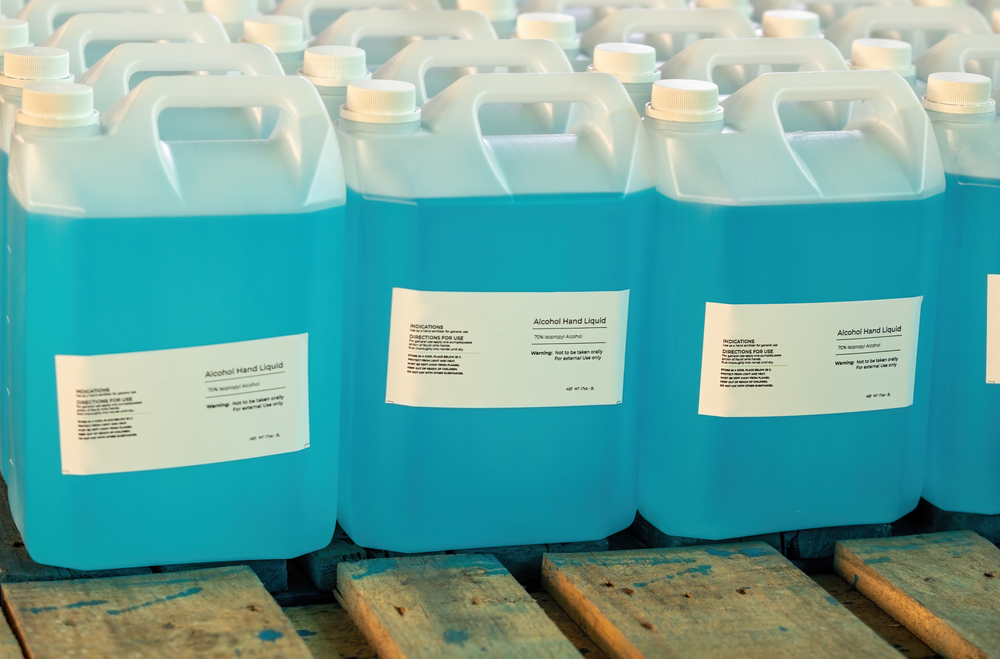
It was while watching a sitcom when I realized how little I knew about hand sanitizers, except for two things – one, it is liquid gold. Two, it cleans our hands.
But, who invented hand sanitizers?
One version of the story points to Lupe Hernandez, a nursing student in Bakersfield, California in 1966, as the inventor of hand sanitizer after combining alcohol and gel for use by doctors in situations where they did not have time to access soap and warm water before treating patients.
How are hand sanitizers so popular?
1. It was in the wake of H1N1 swine flu that more and more health professionals recommended using alcohol-based hand sanitizers to control the spread of germs. Hand sanitizer sales surged by 70% during that period in the U.S.
2. In India, as coronavirus threat spread and the demand for hand sanitizers sharply increased, smaller players jumped in to exploit the demand surge and in March 2020, around 61% of the market was captured by these newly launched brands. The vendors and manufacturers are using online platforms to make their customers aware of their products. Furthermore, during the period of lockdown, only e-commerce could cater to the surged hand sanitizer demand. Thus, increased internet penetration made it possible for consumers to get their supply of essential items like this.
Are all sanitizer preparations equally effective? How is effectiveness measured and calculated?
Broadly there are 2 types of hand sanitizers: alcohol-based and alcohol-free. Alcohol-based hand sanitizers contain varying amounts and types of alcohol, usually between 60% and 95%, and in most cases isopropyl alcohol, ethanol (ethyl alcohol), or n-propanol. Alcohol is known to be able to kill most germs.
Alcohol-free hand sanitizers contain quarternary ammonium compounds (usually benzalkonium chloride) instead of alcohol, which reduces microbes but less effectively than alcohol.
Once prepared, the testing of sanitizers is usually done on inanimate surfaces and not on human hands owing to the complexity of the human hand. The usage of inanimate surfaces with controlled variables is a convenient method to attain consistent results. Owing to this, the manufacturers and vendors can claim the efficiency of killing 99.9% of bacteria.
Why were hand sanitizers out of stock then?
One of the precautionary measures during the current COVID-19 pandemic is to use an alcohol-based hand sanitizer frequently to disinfect hands. Hence, hand sanitizers were out of stock, the reason - inadequate supply of ethanol - a key ingredient.
Ethanol is manufactured by sugar mills in India. And, at 100% capacity utilization, the hand sanitizer industry is expected to have a requirement of 8 million-10 million litres/month of ethanol.
To address this issue, the state governments were directed to ensure the supply and availability of ethanol/ ethyl alcohol/ extra neutral alcohol to manufacturers of hand sanitizers. All necessary permissions on account of licensing and storage of ethyl alcohol/extra neutral alcohol (ENA)/ethanol were accorded by the state government agencies to sanitizer companies up to their installed capacity without any quota restriction on supply. State governments were also directed to grant necessary permissions to distilleries on a priority basis to produce sanitizer in bulk, which can then be packed and bottled.
According to the All India Distillers' Association (AIDA), over 150 distilleries are producing hand sanitizers in the country as of March 2020.
How are distilleries making the hand sanitizers?
While the technique of production of sanitizer and its’ nuances would vary, it’d be line with WHO recommended alcohol-based sanitizer formulations.
The WHO recommends two alcohol-based sanitizer formulations:
Formulation I: To produce final concentrations of ethanol 80% v/v, glycerol 1.45% v/v, hydrogen peroxide (H2O2) 0.125% v/v.
Pour into a 1000 ml graduated flask:
a. ethanol 96% v/v, 833.3 ml
b. H2O2 3%, 41.7 ml
c. glycerol 98%,14.5 ml
Top up the flask to 1000 ml with distilled water or water that has been boiled and cooled; shake the flask gently to mix the content.
Formulation II: To produce final concentrations of isopropyl alcohol 75% v/v, glycerol 1.45% v/v, hydrogen peroxide 0.125% v/v:
Pour into a 1000 ml graduated flask:
a. isopropyl alcohol (with a purity of 99.8%), 751.5 ml
b. H2O2 3%, 41.7 ml
c. glycerol 98%, 14.5 ml
Top up the flask to 1000 ml with distilled water or water that has been boiled and cooled; shake the flask gently to mix the content.
(Scientists in Germany and Switzerland have tested the sanitizers’ effectiveness against COVID-19 virus, exposing the virus particles to each formulation for 30 seconds. When they tested the subsequent ability of the virus to infect cells in lab cultures, they found that both formulations had inactivated the virus.)
#Covid_19
- https://www.who.int/infection-prevention/publications/hand-hygiene-2009/en/
- https://apps.who.int/iris/bitstream/handle/10665/44102/9789241597906_eng.pdf?sequence=1&isAllowed=y&ua=1
- https://www.who.int/gpsc/5may/Guide_to_Local_Production.pdf?ua=1
- https://brandequity.economictimes.indiatimes.com/news/business-of-brands/how-brands-in-india-addressed-the-surge-in-hand-sanitiser/75273326
- https://www.icis.com/explore/resources/news/2020/03/23/10485458/india-boosting-ethanol-output-for-sanitisers-on-coronavirus-pandemic
- https://theconversation.com/coronavirus-not-all-hand-sanitisers-work-against-it-heres-what-you-should-use-133277
- https://www.business-standard.com/article/economy-policy/sugar-mills-boost-production-capacity-of-hand-sanitisers-to-100k-l-per-day-120032801036_1.html
- https://www.cnbc.com/2020/03/27/coronavirus-the-history-of-hand-sanitizer-and-why-its-important.html


